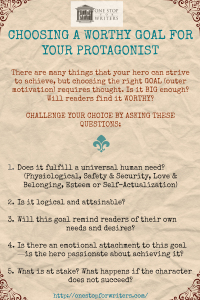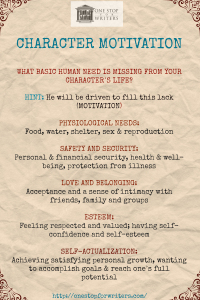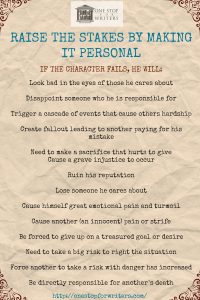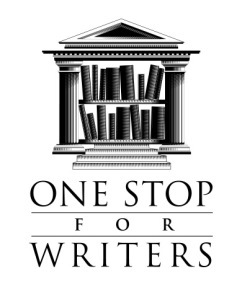Planning a Novel: Character Arc In A Nutshell
It’s NaNoWriMo Season, and that means a ton of writers are planning their novels. Or, at the very least (in the case of you pantsers) thinking about their novel.
Whether you plot or pants, if you don’t want to end up in No Man’s Land halfway to 50K, it is often helpful to have a solid foundation of ideas about your book. So, let’s look at the biggie of a novel: Character Arc. If you plot, make some notes, copious notes! If you pants, spend some time mulling these over in the shower leading up to November 1st. Your characters will thank you for it!
A new book. Are you excited? I hope so. You’re about to create a new reality!
Can you imagine it, that fresh page that’s full of potential? Your main character is going to…um, do things…in your novel. A great many things! Exciting things. Dangerous things. There might even be a giant penguin with lasers shooting out of its eyes, who knows?
But here’s a fact, my writing friend…if you don’t know WHY your protagonist is doing what he’s doing, readers may not care enough to read beyond a chapter or two.
The M word…Motivation
It doesn’t matter how well drawn your hero is or what cool and trippy things he does in a story…if readers don’t understand the WHY behind his actions, they won’t connect to him. We’re talking about Motivation, something that wields a lot of power in any story. It is the thread that weaves through a protagonist’s every thought, decision, choice and action. It propels him forward in every scene.
Because of this, the question, What does my character want? should always be in the front of your mind as you write. More importantly, as the author, you should always know the answer.
Outer Motivation – THE BIG GOAL (What does your character want?)
 Your character must have a goal of some kind, something they are aiming to achieve. It might be to win a prestigious award, to save one’s daughter from kidnappers, or to leave an abusive husband and start a new life. Whatever goal you choose, it should be WORTHY. The reader should understand why this goal is important to the hero or heroine, and believe they deserve to achieve it.
Your character must have a goal of some kind, something they are aiming to achieve. It might be to win a prestigious award, to save one’s daughter from kidnappers, or to leave an abusive husband and start a new life. Whatever goal you choose, it should be WORTHY. The reader should understand why this goal is important to the hero or heroine, and believe they deserve to achieve it.
Inner Motivation – UNFULFILLED NEEDS (Why does the protagonist want to achieve this particular goal?)
 Fiction should be a mirror of real life, and in the real world, HUMAN NEEDS DRIVE BEHAVIOR. Yes, for you psychology majors, I am talking about Maslow’s Hierarchy of Human Needs. Physical needs, safety and security, love and belonging, esteem and self-actualization are all part of what it is to be human.
Fiction should be a mirror of real life, and in the real world, HUMAN NEEDS DRIVE BEHAVIOR. Yes, for you psychology majors, I am talking about Maslow’s Hierarchy of Human Needs. Physical needs, safety and security, love and belonging, esteem and self-actualization are all part of what it is to be human.
If you take one of these needs away, once the lack is felt strongly enough, a person will be DRIVEN to gain it back. The need becomes so acute it can no longer be ignored–it is a hole that must be filled.
If someone was threatening your family (safety and security) what might you do to keep loved ones safe? If each day you went to a workplace where you were treated poorly by your boss (esteem), how long until you decide to look for a new job? These needs are real for us, and so they should be real for our characters. Ask yourself what is missing from your character’s life. Why do they feel incomplete? The story becomes their journey to fill this lack.
 Outer Conflict – THE WHO or WHAT (that stands in the way of your hero achieving his goal)
Outer Conflict – THE WHO or WHAT (that stands in the way of your hero achieving his goal)If your story has an antagonist or villain, you want to spend some solid time thinking about who they are, why they’re standing in the hero’s way, and what motivates them to do what they do.
The reason is simple…the stronger your antagonist is, the harder your hero must work to defeat him. This also means the desire of achieving the goal must outweigh any hardship you throw at your hero, otherwise he’ll give up. Quit. And if he does, you’ll have a Tragedy on your hands, not the most popular ending.
Our job as authors is to challenge our heroes, and create stakes high enough that quitting isn’t an option. Often this means personalizing the stakes, because few people willingly put their head in an oven. So make failure not an option. Give failure a steep price.
The problem is that with most stories, to fight and win, your character must change. And change is hard. Change is something most people avoid, and why? Because it means taking an honest look within and seeing one’s own flaws. It means feeling vulnerable…something most of us seek to avoid. This leads us to one of the biggest cornerstones of Character Arc.
Inner Conflict – The STRUGGLE OVER CHANGE (an internal battle between fear and desire, of staying chained to the past or to seek the future)
To achieve a big goal, it makes sense that a person has to apply themselves and attack it from a place of strength, right? Getting to that high position is never easy, not in real life, or in the fictional world. In a novel, the protagonist has to see himself objectively, and then be willing to do a bit of housecleaning.
What do I mean by that?
Characters, like people, bury pain. Emotional wounds, fears, and vulnerability are all shoved down deep, and emotional armor donned. No one wants to feel weak, and when someone takes an emotional hit after a negative experience, this is exactly what happens. They feel WEAK. Vulnerable.
The Birth of Flaws
What is emotional armor? Character Flaws. Behaviors, attitudes and beliefs that a character adopts as a result of a wounding event. Why does this happen? Because flaws minimize expectations and keep people (and therefore their ability to cause further hurt) at a distance. But in doing so, flaws create dysfunction, damage the protagonist’s relationships and prevent his personal growth. And due to their negative nature, flaws also tend to get in the way, tripping the character up and prevent him from success.
Facing Down Fear
Fear, a deeply rooted one, is at the heart of any flaw. The character believes that the same painful experience (a wound or wounds) will happen again if unchecked. This belief is a deeply embedded fear that blinds them to all else, including what is holding them back from achievement and happiness.
To move forward, the protagonist must see his flaws for what they are: negative traits that harm, not help. He must choose to shed his flaws and face his fears. By doing this, he gains perspective, and views the past in a new light. Wounds no longer hold power. False beliefs are seen for the untruths they are. The character achieves insight, internal growth, and fortified by this new set of beliefs, is able to see what must be done to move forward. They finally are free from their fear, and are ready to make the changes necessary to achieve their goal.
Why Does Character Arc Hold Such Power Over Readers?
This evolution from “something missing” to “feeling complete” is known as achieving personal growth in real life, which is why readers find Character Arc so compelling to read about. As people, we are all on a path to becoming someone better, someone more whole and complete, but it is a journey of a million steps. Watching a character achieve the very thing we all hope to is very rewarding, don’t you think?
Need a bit more help with some of the pieces of Character Arc? Try these:
Why Is Your Character’s Emotional Wound So Important?
Emotional Wounds: A List Of Common Themes
The Connection Between Wounds and Basic Human Needs
Flaws, Emotional Trauma and The Character’s Wound
Make Your Hero Complex By Choosing The Right Flaws
Explaining Fears, Wounds, False Beliefs and Basic Needs
 And did you know…
And did you know…The bestselling books, The Emotion Thesaurus, The Negative Trait Thesaurus and The Positive Trait Thesaurus are all part of One Stop For Writers, along with many other upgraded and enhanced description collections?
You can also access many workshops and templates to help with Character Arc, or take our Character Wound & Internal Growth Generators for a spin.
Are you NaNoing this year? How is your Character Arc coming along? Let me know in the comments!
Before you go…
Becca is over at The Creative Penn and W-O-W does she have something special for you. This post is unmissable if you want to learn how to elevate your description in a way that sticks with readers. Have a read and bookmark it, because chances are you’ll want to come back to it more than once! The Art Of Turning A Unique Phrase
The post Planning a Novel: Character Arc In A Nutshell appeared first on WRITERS HELPING WRITERS™.
Writers Helping Writers
- Angela Ackerman's profile
- 1014 followers



